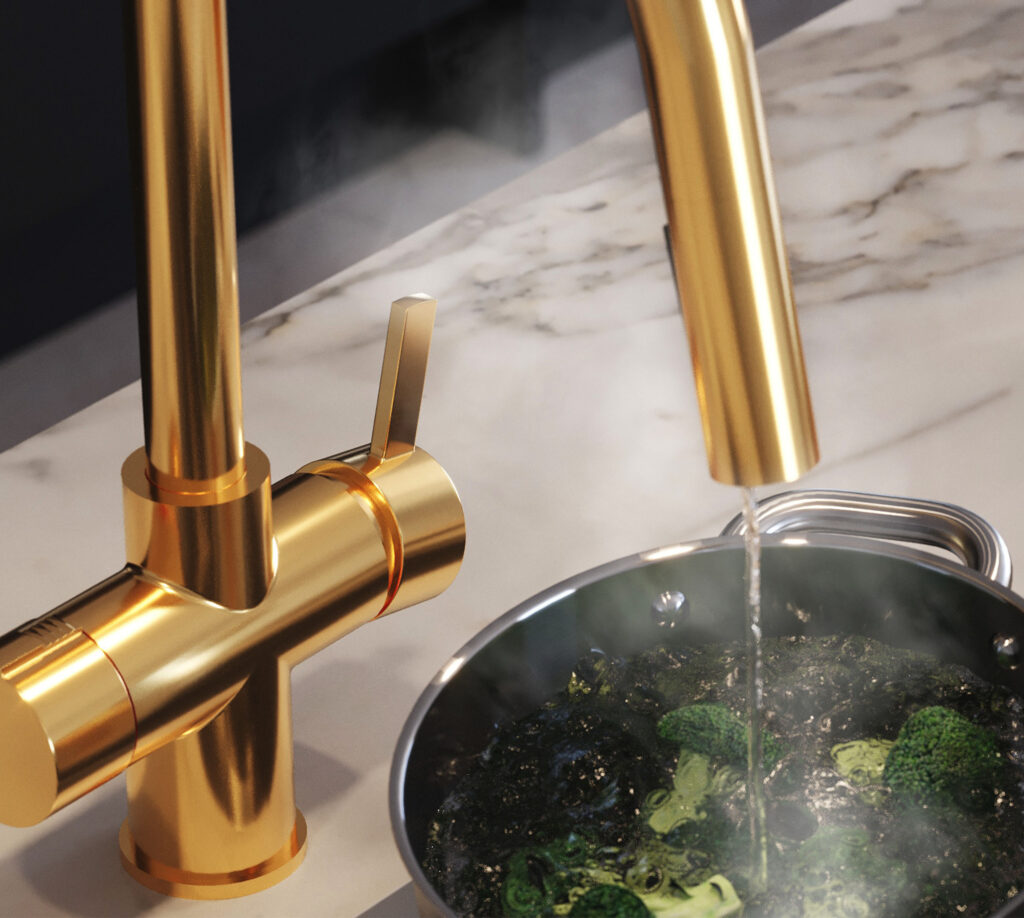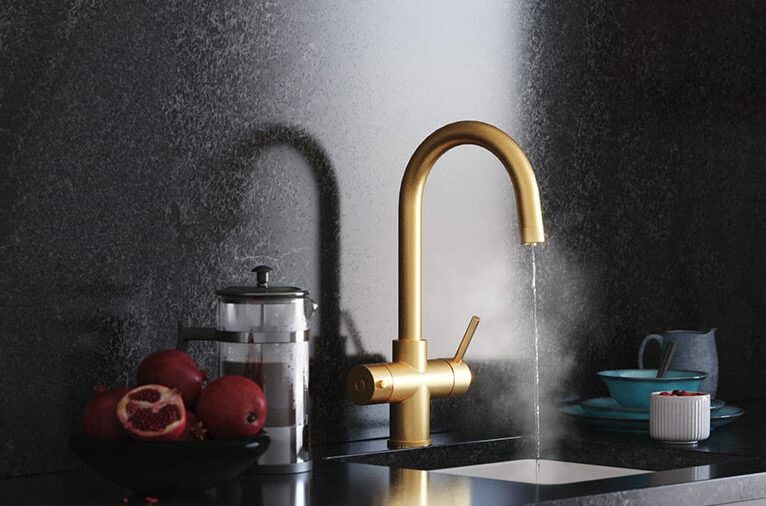How Much Does a Boiling Water Tap Cost to Run?

Many of us love the convenience of a boiling water tap — instant hot water for our tea or coffee is a simple pleasure. But a common question we often receive is, "How will a boiling water tap affect my energy bill?".
The answer might pleasantly surprise you. Running a boiling water tap may seem like it would significantly increase your energy costs, but the reality is far from it.
The costs of running a boiling water tap are on par with, or even less than, using a kettle multiple times a day. So you can enjoy your instant cuppa without worrying about a significant impact on your energy bills! Let's delve into the details.
What are Boiling Water Taps and How Do They Work?
Boiling water taps are a modern marvel in the realm of kitchen appliances. They are specially designed taps that provide instant boiling water upon demand, eliminating the waiting game usually associated with traditional kettles. The basic mechanics involve an under-sink tank connected to the mains water supply.
This tank heats the water to near-boiling temperatures and maintains it at this level. Whenever you need hot water, simply turn on the tap, and voila, instant boiling water at your fingertips! They're incredibly user-friendly, efficient, and a real game-changer for those of us who love a quick brew.
The Running Costs of a Boiling Water Tap
When it comes to running costs, boiling water taps are surprisingly economical. The energy consumption of these devices is relatively low because the under-sink tank uses insulation to keep the water hot, reducing the need for constant re-heating.
So, let's get down to the nitty-gritty.
Operating a boiling water tap costs approximately 10p a day.
This might initially sound like a considerable amount, but let's contrast it with the cost of using a kettle.
Each time you boil your kettle, it costs between 2-7p.
This depends on the make and the amount of water you're heating. The fuller a kettle is, the more it costs to boil it.
If you're a tea or coffee aficionado and find yourself boiling the kettle multiple times daily, those pennies can quickly add up! So when you look at the picture over a longer duration, the daily cost of running a boiling water tap can actually prove to be a more economical and efficient choice.

Energy Consumption of a Boiling Water Tap
Boiling water taps are designed to be energy-efficient from the inside out. This means that energy consumption is minimal, mainly because these devices use insulation technology to maintain the water at near-boiling temperatures. This means the device isn't constantly firing up and using energy to reheat the water every time you need a hot drink.
In the long run, the energy efficiency of a boiling water tap could make it a more economical choice, particularly for households that boil water several times a day. Most households, though, will see little change in their energy bills after installing a boiling water tap.
After all, the biggest saving you make is your time.
This is likely a relief for homeowners who might think our taps cost a fortune to run.
Other Costs to Consider
While the running costs of a boiling water tap are quite economical, it's important to consider the upfront costs. Yes, the initial outlay for a boiling water tap is indeed higher than that of an average kettle. These high-tech appliances can range anywhere from £300 (such as the Avista) to over £1000 for some models from other brands.
This might seem steep at first glance, but it's also crucial to consider the long-term benefits. The convenience of instant hot water, coupled with the potential savings on your energy bills over time, could make this a worthwhile investment for your home.
Of course, each household is unique, so it's essential to assess how much you'll use and budget before making a decision. You can read more about the specifics of boiling water tap ownership in our buyer's guide.
The Green Advantage of Boiling Water Taps
Boiling water taps not only offer unbeatable convenience - but they also come with some notable environmental benefits, particularly when looking at 4-in-1 taps. These taps provide boiling water, hot and cold water, and even filtered cold or chilled water, all from the same source.
4-in-1 taps eliminate the need for single-use plastic water bottles, and while Platinum and Quantum both offer filtered cold water at the temperature of your mains (typically between 10-20°C), our Quantum Chilled goes one step further and dispenses filtered chilled water at an ice-cold 4°C.
Insulated Boiler Tanks
Insulated boiler tanks are core to the energy-saving design of the boiling water taps. This insulation traps as much heat in as possible, reducing the amount of energy required to maintain the water at near-boiling temperatures. In other words, the insulated tanks lose minimal amounts of heat, so the system needs to apply very little energy to reheat the water.
This way, boiling water taps avoid the energy wastage associated with traditional methods of continuously heating and reheating water in a kettle. It's this efficient system that makes the boiling water tap a great option for households concerned about energy usage.

Making the Switch: Why Boiling Water Taps Make Sense
It may come as little surprise that we believe that a hot water tap is worth the initial outlay - hundreds of customers have told us that their tap has transformed the way they cook and clean at home. Here are just some of the benefits of our taps:
- Instant access to boiling water: No need to wait for the kettle to boil, simply turn on the tap for immediate hot water.
- Reduced energy costs: By maintaining a constant temperature, boiling water taps eliminate the need for constant reheating, saving on energy costs in the long run.
- Convenient and user-friendly: Safe to use and easy to install, boiling water taps are the ultimate convenience in modern kitchens.
- Environmentally friendly: 4-in-1 models can replace plastic water bottles with their filtered water option, contributing to reducing plastic waste. They also use less energy than traditional methods, resulting in lowered carbon emissions.
- Aesthetically pleasing: Sleek and modern, these taps add a touch of elegance to any kitchen, enhancing the overall look and feel.
- Saves time: Ideal for busy households, boiling water taps reduce the time spent on boiling water for cooking or beverages.
Your Kitchen's New Best Friend
Ready to make the switch? Explore our range of boiling water taps and find the perfect fit for your home. Here are some of our top picks:
- Avista 3-in-1: Economical without compromising on style, the Avista model is perfect for households of any size. The UK's most affordable boiling water tap.
- Athena 3-in-1: Athena is the next step up from Avista, offering a premium build and more functionality with adjustable temperature settings.
- Astra 3-in-1 Pull-Out: Our newest 3-in-1 model offers the myriad of benefits that come with instant boiling water, plus the added bonus of a pull-out spout for maximum flexibility at the sink.
- Quantum 4-in-1: The ultimate modern convenience, this tap provides boiling, hot, cold, and filtered cold water - a complete solution for your kitchen.
- Quantum 4-in-1 Chilled: Our latest model offers 4 functions including ice-cold filtered water down to 4°C and instant boiling water between 75-98°C.
- Platinum 4-in-1 Pull-Out: Our premium tap offers 4 water functions with a pull-out spout. The ultimate tap at an affordable price point.
Remember to consult our comprehensive buyer's guide for more information on choosing the right boiling water tap for your needs. We're sure you'll love the convenience and efficiency these taps bring to your kitchen.
